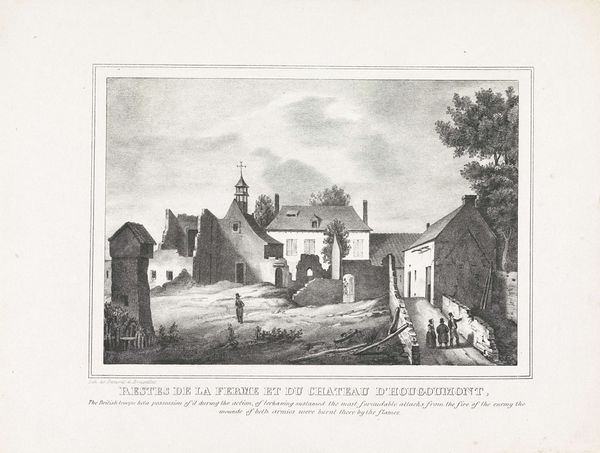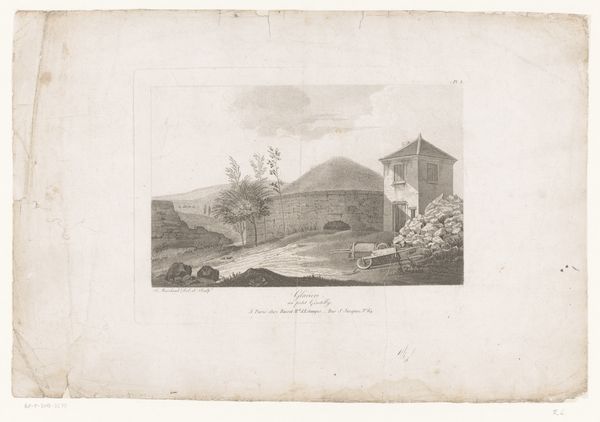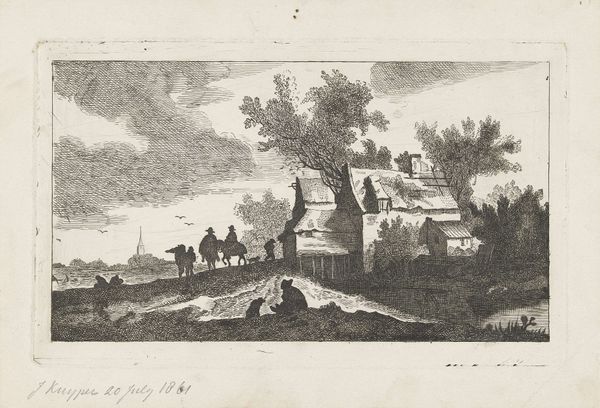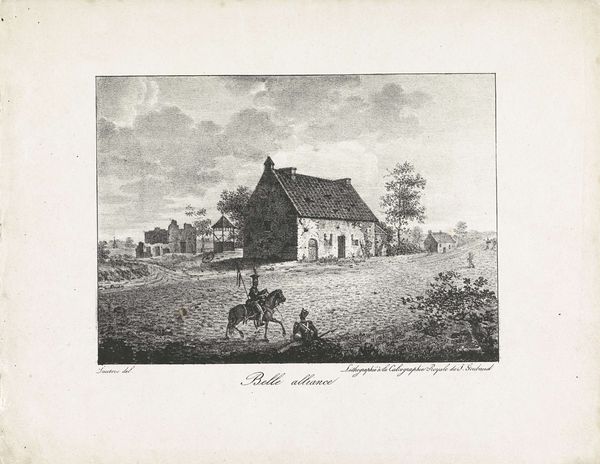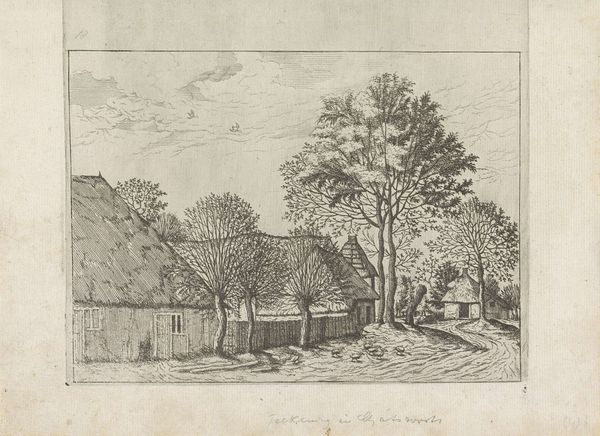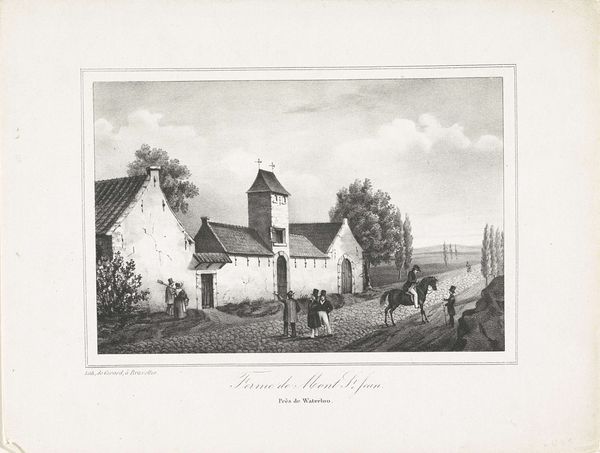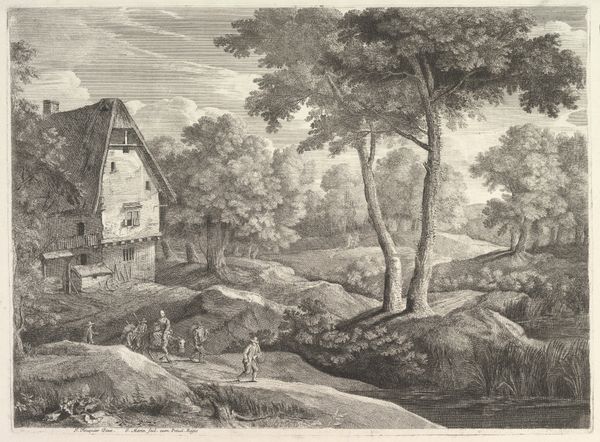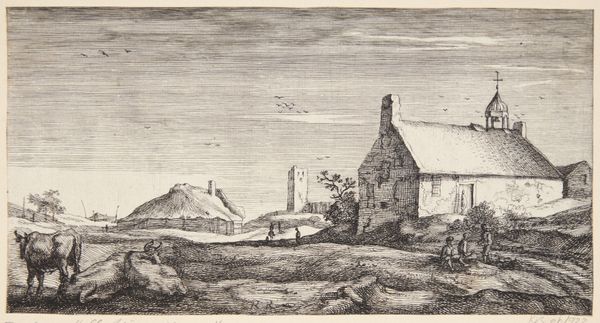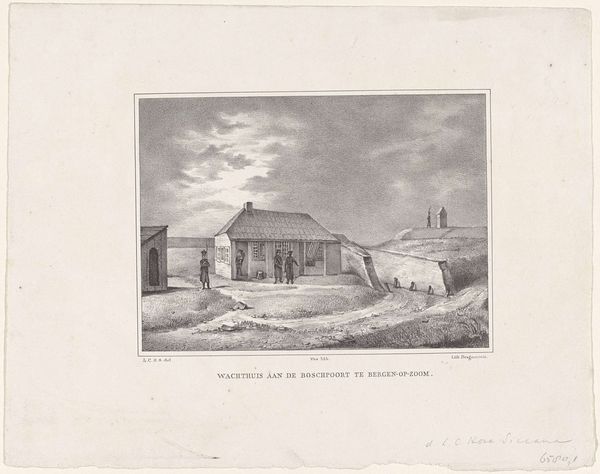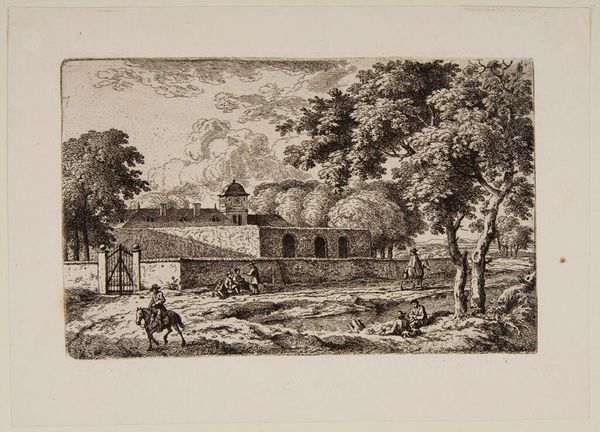
print, engraving
# print
#
old engraving style
#
landscape
#
cityscape
#
engraving
#
realism
Dimensions: height 240 mm, width 307 mm
Copyright: Rijks Museum: Open Domain
Paulus Lauters made this print of the Prins van Oranje around 1815, using lithography. Lithography is a printmaking process that relies on the contrast between greasy and water-receptive areas on a stone or metal plate. The artist draws an image with a greasy crayon or ink, then treats the surface so that ink adheres only to the drawn areas when printed. This print, like others made using lithography, democratized image production. The process allowed for relatively quick and inexpensive reproduction, making images accessible to a broader audience. This shift had implications for labor as well. Unlike engraving, which required highly skilled artisans, lithography opened up opportunities for artists with different skill sets. It also facilitated mass production, catering to a growing market for printed materials. Lauters’ print reflects these changes in the means of production, mirroring the broader societal shifts happening during the early 19th century. It reminds us that art is not just about aesthetics; it’s also about the materials, processes, and social context in which it is created.
Comments
No comments
Be the first to comment and join the conversation on the ultimate creative platform.
